I’m Divorcing My Wife Because of What She Did to My Baby

Imagine swimming in a salty ocean deep beneath the icy shell of a moon. There are geothermal vents around you, and they provide the energy tiny microbes need to survive. Or exploring a moon covered in rivers of methane and ethane, where life could be hiding in the depths of craters. The point is — we may not need to leave our own Solar System to look for any sign of life outside of Earth.
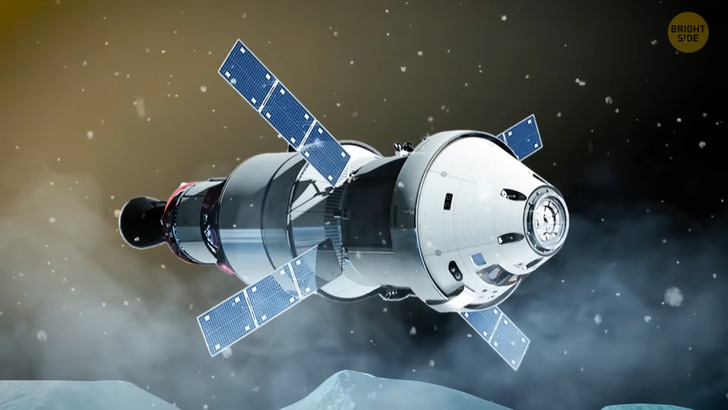
Icy moons could rewrite cosmic history with oceans sandwiched between an ice crust and a hot planetary core! Something unexpected happened in 2005 — while visiting Saturn, the Cassini spacecraft flew through a fine water mist. It was spraying into space through cracks in the surface of Enceladus, one of Saturn’s moons covered in ice. And the water was coming out at a crazy speed of 802 mph. Cassini wasn’t built to sample water, but it was still encouraging for scientists to discover something like that. They developed new missions where they wanted to focus on the icy moons of the outer regions of our Solar System.
On our home planet, water is the base for life “as we know it.” And now, at least six moons might be spots where we could find watery oceans — one orbiting Neptune, two circling around Saturn, and three traveling around Jupiter. Scientists study extreme environments on our own planet to understand and guide their search for extraterrestrial life. For example, take such places as deep-sea volcanic vents and frozen lakes in Antarctica — they can tell us more about what conditions could support life on other planets.
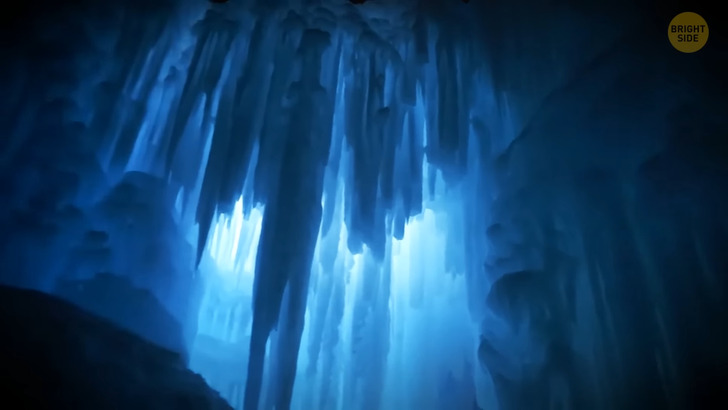
And these missions are led by a team of experts from different institutions that joined into something called Network for Ocean Worlds. They hope to finally find some life outside of Earth. C’mon there, we need some new friends! So, hello there, Europa! Picture a frozen moon covered in double ridges that crisscross its surface like scars. Recently, scientists have discovered something exciting — there may be shallow pools of water on Europa, right under its icy surface! These ridges are very similar to those found on the Greenland ice sheet. And if they formed in a similar way to those in Greenland, these pockets of subsurface water may be common on Europa, hiding just beneath its frozen surface.
Such pools form when subsurface water freezes and fractures the surface again and again, pushing up twin ridges. It’s like when you put a can of soda in the freezer, and it explodes, pushing up the ridges on the surface. These ridges on Europa are up to 984 feet high and separated by valleys half a mile wide. And you know the rule — where there’s water, there may be life. Chemicals that are necessary for life may be circulating from the icy shell down to the salty ocean far below the surface. And Europa has already been one of the most popular moons in our Solar System when it comes to looking for extraterrestrial life, considering there’s a deep ocean beneath its icy shell. Scientists believe this ocean could be 40 to 100 miles deep, which means it could hold twice as much water as all of our oceans combined.
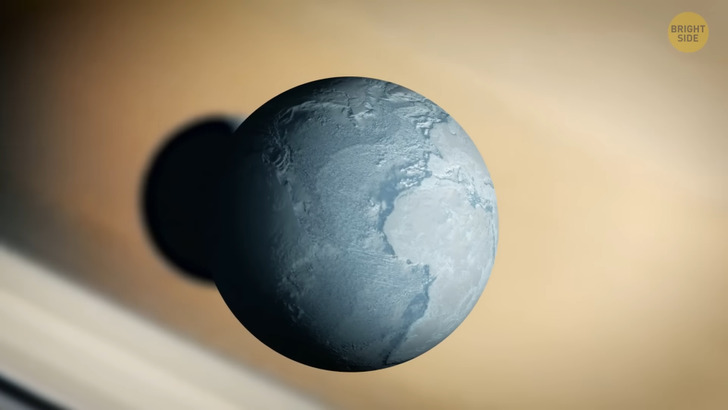
Another candidate is this tiny moon called Enceladus, which is about as wide as Arizona. Despite its small size, scientists think it could host some life, just like Europa. The reason? Again, a liquid water ocean and a thin layer of ice that covers it. In 2008, NASA’s space probe detected plumes of salty water vapor going out from the moon’s south pole. Scientists analyzed the plumes and found organic molecules like carbon, nitrogen, and oxygen, which are important building blocks of life. Instead of a thick ice cap, like Europa has, Enceladus might have a thinner coating of ice mixed with crust. The plumes are really fast, which tells us they could be produced by a liquid ocean present at the moon’s south pole.
Scientists believe that on Enceladus, there is a constant process where water vapor rises up from the surface, then falls back down and turns into liquid water again. And it’s been happening for hundreds of thousands of years. This movement could help distribute organic molecules that scientists think are necessary for life to exist. So, there’s a chance for tiny living things crawling somewhere on Enceladus! Earth is a pretty awesome place, and there are a lot of factors that make it friendly to life as we know it. But when it comes to finding life beyond our planet, we can’t just assume every other place in our Solar System needs to have all these factors to have any signs of life.
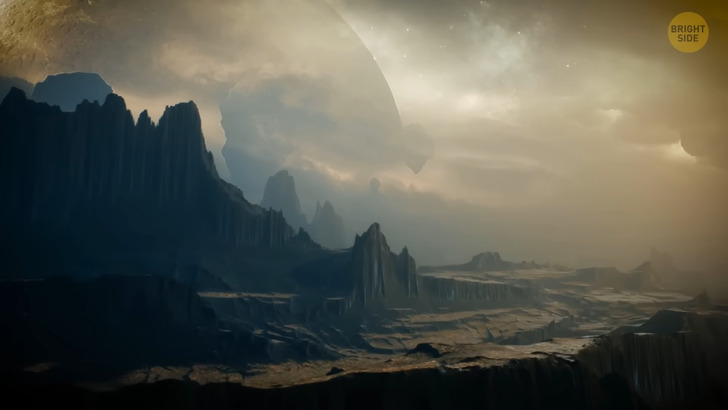
And one of the most promising places is definitely Ganymede, the largest moon in our Solar System. It’s gray and covered with craters, and it may look boring at first glance. But don’t let its dull appearance fool you — we’ve recently discovered there’s water vapor in its atmosphere! And there’s more to it than just water. On Earth, we have a lot of other fun and useful factors that make it a good place for life. We have a magnetic field that protects us from harmful radiation and a big moon that creates tides that help mix up our oceans. We also have a deep, liquid water ocean and land masses with different elevations that create a variety of environments for life to thrive.
Ganymede has some of these factors as well. A magnetic field — check. Plus, it’s Jupiter’s biggest moon, so tidal forces are present there, too. Ganymede is tidally locked to Jupiter, which means it always shows the same face to the gas giant. But even though it’s so close to Jupiter, Ganymede still manages to rotate around its own axis every seven days. A magnetic field and strong tidal forces are factors that could help create and maintain a liquid water ocean deep beneath the moon’s icy surface — and this ocean may not be just for potential galactic vacations — it may also harbor life!
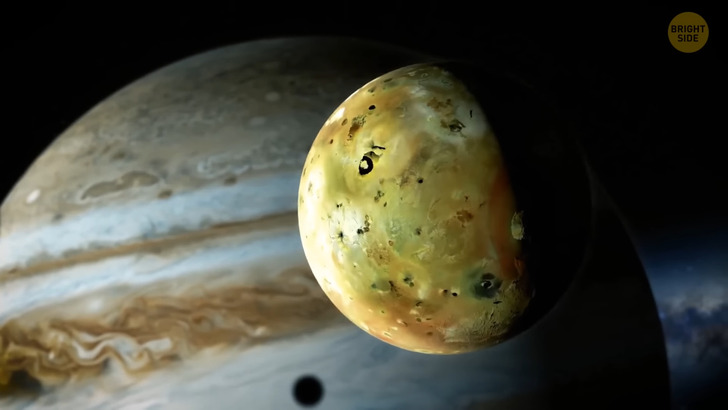
Let’s head to Io, the third-largest Jupiter’s moon! We’re talking about a very special place since it’s the most volcanically active body in our Solar System! Yup, there are more than 400 active volcanoes that shoot out gas and other stuff there. This helped with creating a thin gas atmosphere, mostly made of sulfur dioxide with traces of oxygen. Volcanoes also make certain parts of Io really hot — as hot as 3,000º F. Some other areas are very, very cold −202°F. Life could hardly develop in such extreme conditions. Plus, Io doesn’t have water or organic chemicals, and it orbits within a ring of dangerous radiation. But scientists believe there might have been life on Io a long time ago, maybe even in some other form that we don’t know about today. It could still be there, deep under the moon’s surface. Some simulations suggest that Io formed in an area with lots of liquid water, which, combined with its heat, could have fostered life. But any life on the surface would have been destroyed by the radiation after only 10 million years of existence.
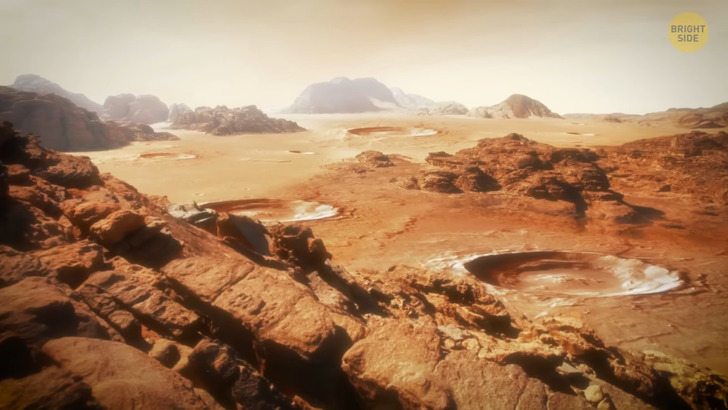
So, if there’s life on Io, it’s probably deep underground, safe from all the crazy radiation at the surface. Like people building entire cities in all those apocalyptic movies, hiding from whatever’s out there on the surface. So, to check that out, we’d need to send a special probe to find it. But building a probe that could land on Io and drill deep enough to find life is a very big challenge, and we’re not quite there yet. Mars is a planet that scientists have studied a lot. They believe the Red Planet used to have liquid water and freshwater lakes on its surface. It’s way better than what we have at the moment — just some plain ice caps on Mars’ poles. But there could be some organic compounds present in its crust. These days, Mars is extremely cold and has a thin atmosphere. Not very promising. But some scientists think the Red Planet used to be much warmer and more hospitable. Hopefully, all those rovers and probes will bring us some awesome news and evidence of life!











